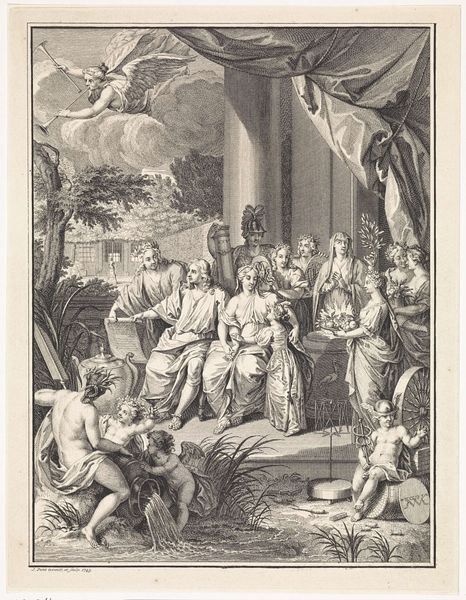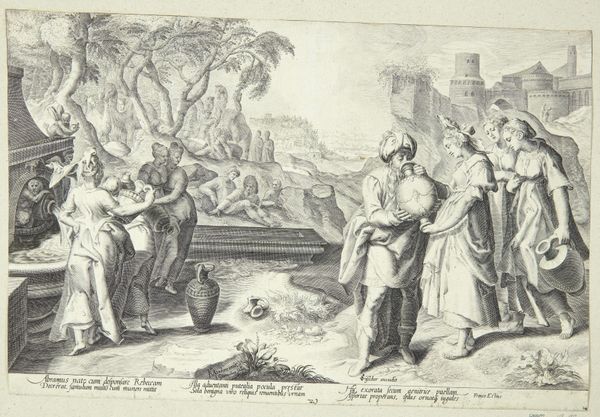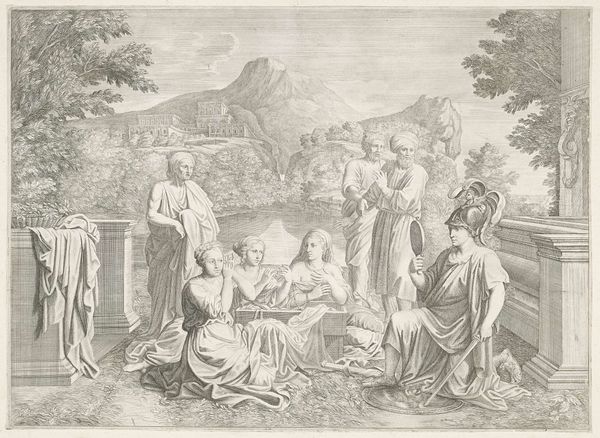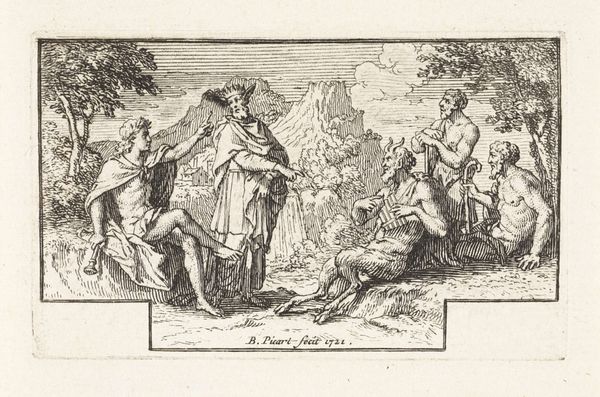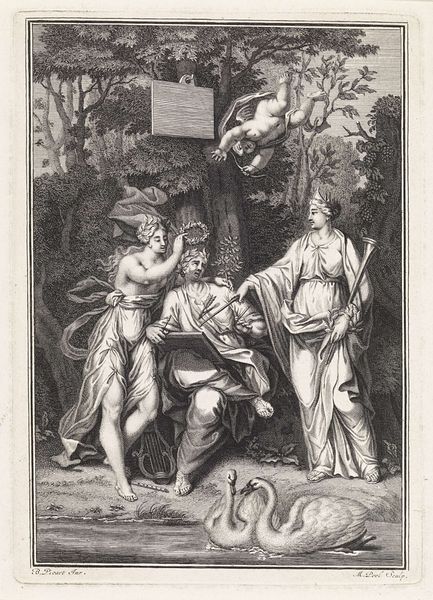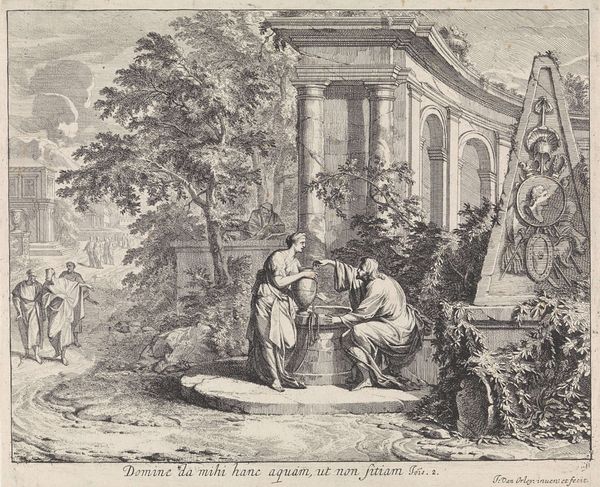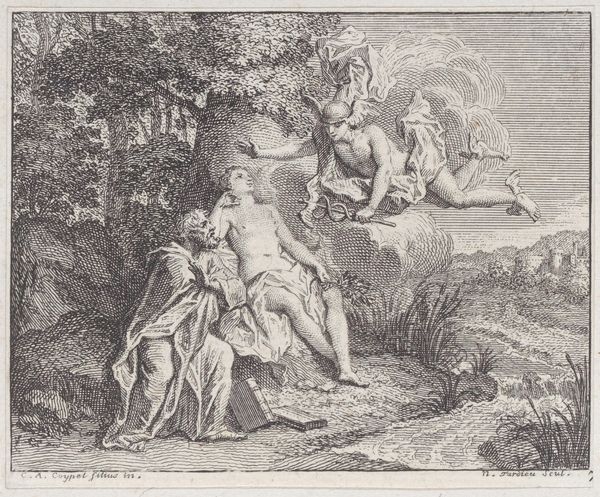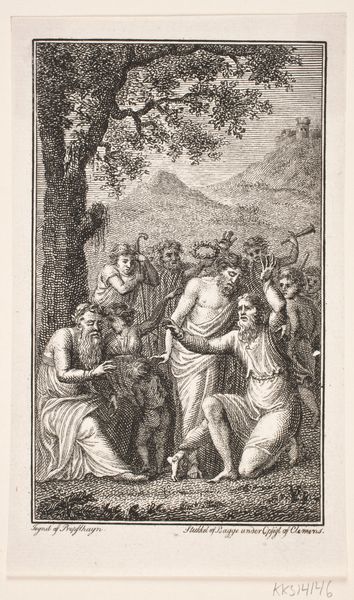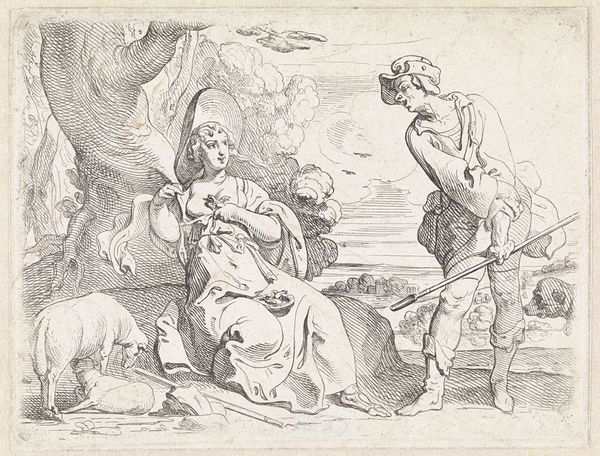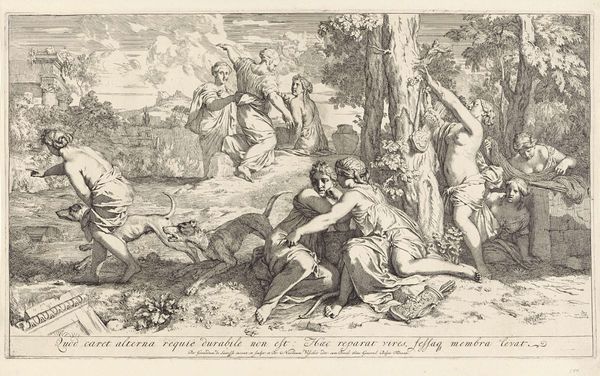
Dimensions: height 430 mm, width 528 mm
Copyright: Rijks Museum: Open Domain
Editor: So, this engraving, "Mozes wordt gevonden door de dochter van de farao," by Giovanni Volpato, dates from 1743 to 1803. The classical style creates such a serene, almost idealized, depiction of a biblical scene. I'm curious, what socio-political messages might be embedded within this seemingly tranquil image? Curator: It's interesting how you immediately read this as an intersection of style and potential messaging. Think about it: Volpato, working in a period saturated with both religious and political upheaval, is choosing to depict a story about the salvation of a Hebrew child by an Egyptian princess. How does the power dynamic between these figures, and indeed these nations, strike you? Editor: I see what you mean. It’s not just a feel-good biblical scene. There's this tension of power, especially considering the context of colonialism and class disparities that existed then, and still exist today. Could the portrayal of the princess, defying her father, perhaps reflect emerging ideals of resistance against authoritarian rule? Curator: Exactly! And how does the emphasis on classical aesthetics - the serene figures, the balanced composition, the allegorical figures -- influence that interpretation? Is it meant to ennoble the act of defiance, to align it with enlightenment ideals of reason and justice? Also, note the women's bodies are visible. This alludes to the social standing and possible subjugation in relation to Pharaoh’s will. Editor: That's a compelling way to look at it. By idealizing these figures within this historical narrative, Volpato subtly elevates resistance against oppression. Thanks, I'll definitely approach engravings with an eye on its role in sociopolitical discourse. Curator: And remember, even seemingly straightforward historical paintings can function as quiet acts of rebellion or commentary. Considering the cultural and political atmosphere in which art is produced deepens our understanding.
Comments
No comments
Be the first to comment and join the conversation on the ultimate creative platform.
